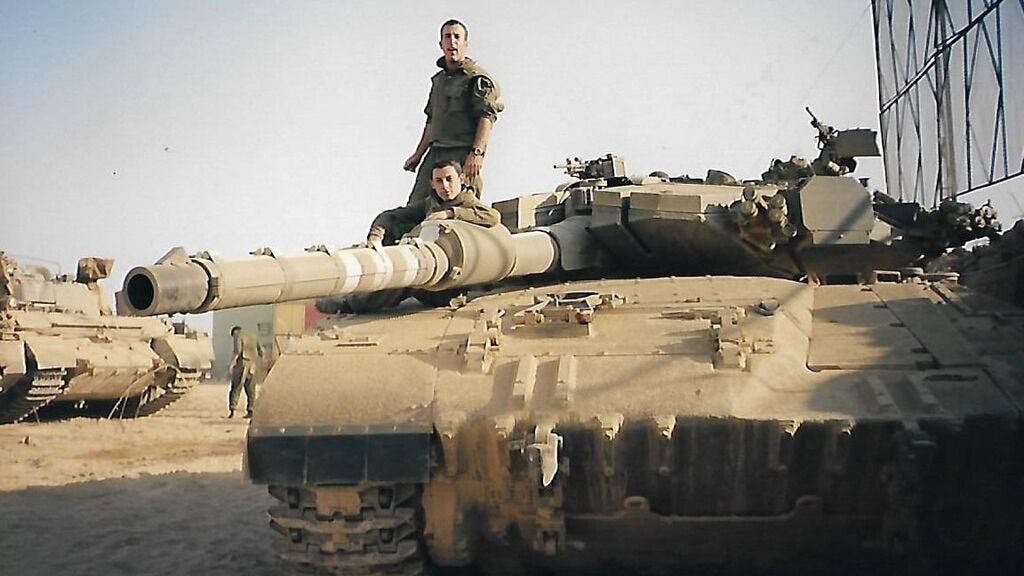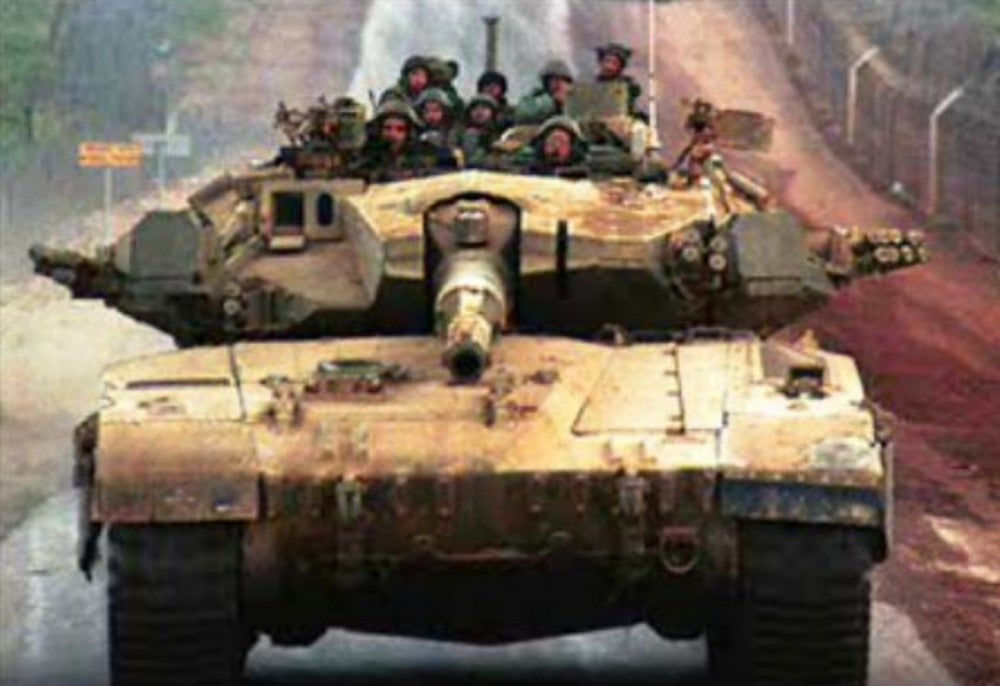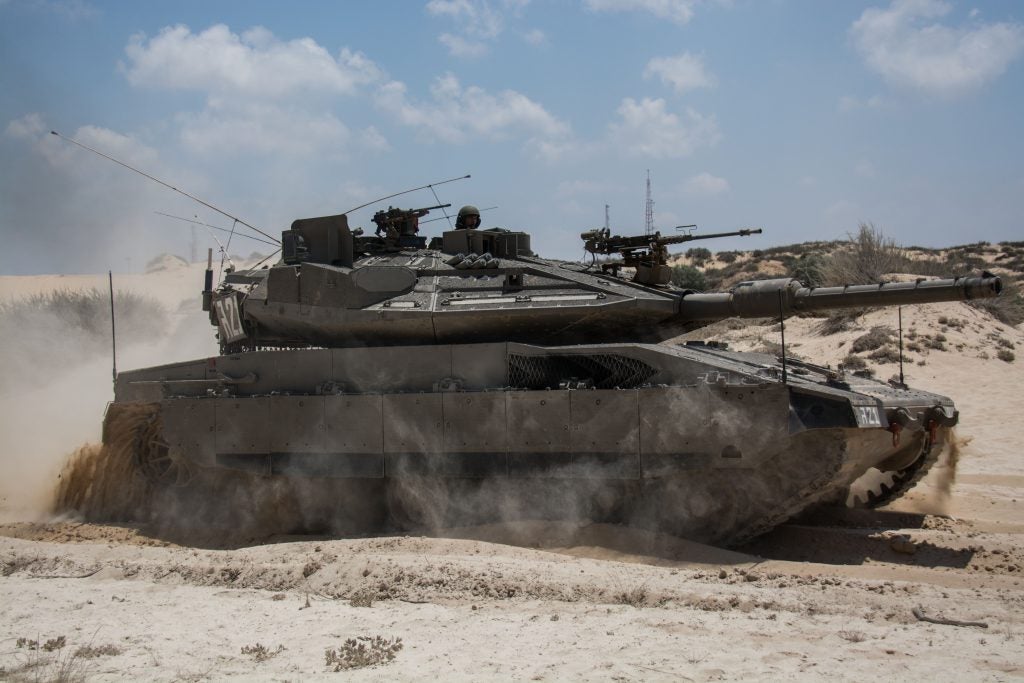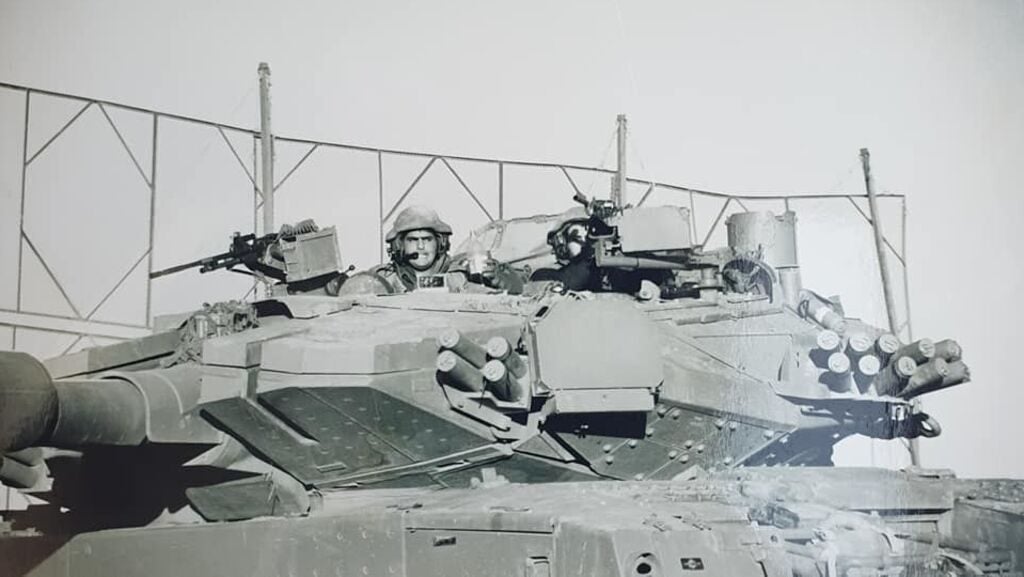Israeli “Purple Thunder” Soft Kill APS Declassified – 20 Years On
The Israeli Ministry of Defense has declassified the existence of a soft-kill active protection system outfitted on the Merkava during the late 1990s, 20 years after the conclusion of its sole deployment in southern Lebanon.
The Raam Segol, or Purple Thunder active protection system was equipped on Merkava tanks of the Nachsol (“Strike”) Armored Company, of the 71st Battalion of the 188th Armored Brigade. The Merkava company was deployed to the Reihan outpost in the Southern Lebanon Security Strip, at the very northernmost edge of the strip itself. Soldiers deployed to the outpost that weren’t from the company were ordered to stay clear of the tanks, and the tanks themselves were kept concealed when not out in the field.
Unlike other units which were rotated in and out of the Security Strip, the Nachsol Company was permanently deployed to the outpost, which had become notorious for its forward position that made it a prime target for Hezbollah. It was its nature as a prime target that made it the ideal location for the field testing of Purple Thunder. Hermon David, deputy commander of the Nachsol Company, described the goal of the Nachsol Company to Ynet as “to be in the most dangerous and troublesome places all the time, in order to test the efficacy of the system should Hezbollah fire a missile at us”.

The Purple Thunder active protection system was a soft-kill system. Upon detection of an incoming anti-tank guided missile, the tank crew would be warned, and the turret turned in the direction of the incoming missile. A multispectral smokescreen would be deployed with the aid of additional smoke grenade launchers, causing missiles that entered the smokescreen to lose guidance and allowing the tank to reposition to evade the missile or return fire.
Ari Brock, a tank commander with the company, described how the tank company operated:“We made a lot of trips in daylight within view of Hezbollah positions, especially during firefights. The intention was to have a missile fired at us.” He added that he was not afraid of being engaged during daylight, as it was easy to see that a missile had been launched. His first deployments of the Purple Thunder-equipped Merkava was compared to being “let out to play”, with the tanks of the company trying out new things and traveling to distant places under IDF control.
Brock recalls an incident where his tank was parked in the open on a spur road. An incoming missile was detected, but the missile fell short, impacting the ground near the tank’s tracks. The Merkava was undamaged, and the Purple Thunder never activated during the incident. Return fire from the Merkavas eliminated two Hezbollah militiamen, with Brock noting that the APS-equipped Merkavas were not deployed just to soak up punishment, and standard operational necessity still applied.
Omri Miron, the last commander of the Nachsol Company, similarly detailed different tactics trialed by the company, including use of alternating pairs of tanks to mount ambushes at non-routine hours instead of nighttime ambushes that used a combination of tanks and infantry.
However, the deployment would come to an end with the withdrawal of Israeli forces from the Security Belt in 2000. Up until that point, tanks of the Nachsol Company had come under fire from multiple sources, but had never had an incoming ATGM that activated the Purple Thunder system. The experimental deployment of the system ended, and the Purple Thunder system was removed from the tanks and placed into storage. Members of the Nachsol Company were awarded a medal for “extremely high professional norms” that saved lives and dealt damage to Hezbollah. The company was quietly disbanded soon after the withdrawal from Southern Lebanon.

Despite the cloak of secrecy surrounding the deployment, rumors soon spread among IDF soldiers in southern Lebanon about a special tank company at the Reihan outpost. Supposedly, the company’s tanks had a secret system installed, allowing them to eliminate dozens of terrorists in daring operations. Similarly, a Merkava with the Purple Thunder system was photographed during the Israeli withdrawal from the Security Strip in 2000.
The IDF acknowledged the existence of Purple Thunder system to Ynet, stating that the system was a joint project between MAFAT (the Israeli Defense Ministry’s Weapons Development and Technology Infrastructure Administration), Elta Systems and Israel Military Industries (acquired by Elbit Systems in 2018, now part of Elbit’s land division). The IDF added that the Nachsol Company was stood up to operationally test the Purple Thunder system following successful live fire tests, and that the operational tests concluded with the withdrawal from southern Lebanon. In response to the claims that the Nachsol Company deliberately engaged in high risk operations, the IDF said that the company operated identically to other tank companies, using the same procedures and orders. Elta and Elbit did not comment on Ynet’s reporting.

The IDF described Purple Thunder as the basis for Israel’s current active protection system technologies and systems, which have made Israel a world leader in tank active protection against ATGMs. Indeed, a clear lineage can be seen between the multiple small AESA radars deployed on today’s Merkavas as part of the Trophy hard-kill active protection system and the multiple radar antennas mounted on the turrets of Merkavas equipped with Purple Thunder.
Ynet has more in depth interviews with former personnel of the company, as well as video footage of Merkavas equipped with Purple Thunder. The interviews provide a remarkable insight into what it was like to operate Merkavas equipped with the system in southern Lebanon, even if it was ultimately never put to the test.

